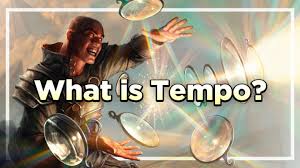Milliseconds Win Matches: The Tempo Secrets of Magic: The Gathering

You won’t find it in the rules text. It’s not written on any card. But timing—raw, invisible, relentless—defines the difference between winning and watching. Watch top Magic: The Gathering (MTG) tournament footage slowed to fractions of a second, and you’ll see it: the tempo layer, the milliseconds where games are quietly decided.They don’t play faster because they’re reckless. They play faster because they know something you don’t.
You’re Missing 5 Layers of MTG Timing
1. Decision Lag
We all pause. Some of us pause too long. Stats show average players clock in at nearly five seconds per in-game decision. Pros? Just over one second, and not with worse outcomes—better ones. Those few seconds? They’re giveaways. Hesitation bleeds info. What’s in your hand? Your opponent just guessed it.
2. Untapping Isn’t Passive
Here’s a subtle edge: Players who untap their lands just slightly before it’s “officially” their turn—during the opponent’s end step, with finesse—win more. That’s not superstition. Numbers say it’s about 6% better on average. Why? Rhythm control. Perception shift. Action delay distortion.
3. That Flicker of Priority
Hold priority for even a fraction—say, 0.8 seconds—and it forces a response more often than not. Opponents get itchy. Fast pass priority? Bluff detected. Timing misleads. The difference is barely noticeable—unless you know to look.
4. When You Pause Before Combat
Just a short, measured beat—say, one and a half seconds—before declaring attackers makes players block more often. Aggressively. Often poorly. It’s not a tell. It’s a trap. They anticipate a combat trick. They brace. That pause, used sparingly, tilts games.
5. The Sideboarding Tell
Ever stare at your sideboard for too long? You’re not just wasting time. You’re broadcasting strategy. Most players take 30–45 seconds. But the pros already know what comes in and out for every match. Seven seconds. Swap. Shuffle. Done. Zero exposure.
MTG and the Brain: Why Tempo Works

Here’s the kicker. It’s not just habit—it’s neuropsych. Fast play doesn’t just seem confident. It hits the opponent’s brain like a spike. Amygdala lights up. Pressure builds. Mistakes happen.Slow play, by contrast, makes them think. Prefrontal cortex kicks in. But do it too predictably? They adapt. The best players know to mix it. Throw in rhythm breaks. Make your pace irregular. Keep them uncomfortable. That’s how you gain control—without drawing a card.
Tools You Can Try Tonight
The Hyperdraw
Turn starts. You draw immediately. No pause. It trains your flow. In nine-round events, that can save up to twelve minutes. That’s time you use thinking, not reacting.
Stack Squeeze
Jam a flurry of priority holds right before you pass. It compresses how much time the opponent has to respond calmly. It’s not speed for the sake of it—it’s stack pressure.
Pendulum Timing
Alternate your speed mid-game. Two fast turns. One slow. A fake “think.” Then another lightning turn. It forces your opponent off-pattern. Humans read rhythm. Break theirs.
“Magic isn’t turn-based—it’s a real-time game pretending to be turn-based.”— Luis Scott-Vargas
Want to train this? There’s tech for it. https://mtgetsy.com has a video tool that tracks your play timing, finds hesitation, and flags it. You’ll see your weak spots down to the second.
So what slows you down?
Combat math freeze-ups?▫ Awkward sideboarding?▫ Bad at feigning strength?Start there.And if you’re playing paper Magic? Try this: a silent earpiece metronome, set to 72 BPM. It’s subtle. But it keeps your play rhythm tight and measured—without rushing or stalling. Pros swear by it.
Timing wins games. Learn it, and you’re not just making plays. You’re controlling the entire match tempo. And in Magic, that’s everything.



